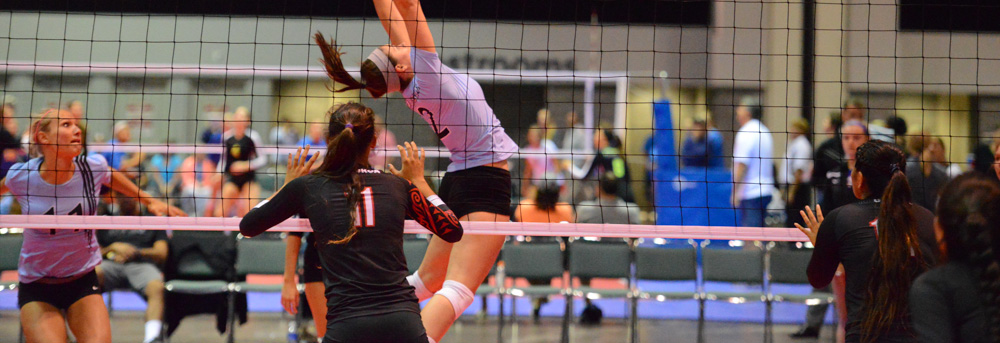Intermediate Lifts
Further Sport Specificity with Front Squat and Push Press
The back squat and strict overhead press as explained in the Course are excellent first lifts to teach volleyball athletes spinal stabilization and ideal hip/knee and shoulder/elbow power transfer. By focusing on mastering the mechanics of these two foundational movements, the athlete ingrains healthy movement patterns that support jumping/landing and blocking.
Once these two lifts are mastered, however, there are advantages to broadening the repertoire to include two additional exercises: the front squat and push press.
Front Squat
For most athletes, the front squat is more challenging than the back squat because its more upright torso demands greater hip mobility – hence the desirability of mastering the back squat first. Once an athlete can safely squat to parallel under some load while maintaining spinal alignment, however, the front squat is a great next step.
The motor cues for the front squat are essentially the same; the primary difference is that the bar is balanced on the deltoids with the arms either in a traditional front rack position or with hands crossed and placed on opposite shoulders.
Advantages of the front squat include:
1) Upright torso better matches the demands of jumping/landing at the net
2) Front rack position enhances scapular and shoulder mobility, and places less stress on the shoulders than the back squat
Learning to initiate the front squat by reaching back with the hips instead of plunging forward with the knees is just as critical as the back squat, and maintaining spinal stability throughout the movement further develops hip mobility and core strength.
Push Press
The push press simply adds momentum generated by lower body with a “dip and drive” movement to help power the bar up during the press. Building on the lesson of the front squat, the push press further teaches how to generate force from the hips with a vertical torso.
The “dip” phase of the push press is accomplished with the core muscles fully engaged, and, like the front squat, involves generating external rotation torque in the hips, reaching back with the hips, and keeping knees out during the brief descent. Following the “dip”, the “drive” phase involves explosively pushing up with the lower body while completing the shoulder press. For safety and control, the athlete should remain with feet entirely on the ground throughout the exercise – it is neither necessary nor desirable for the heels to lift off the ground.
As you can imagine, core strength and stability are absolutely essential. Once athletes have shown good spinal stability under load with the strict overhead press, adding the push component will further train core strength and coordination to safely transmit power from the legs and hips through the torso and shoulders.
